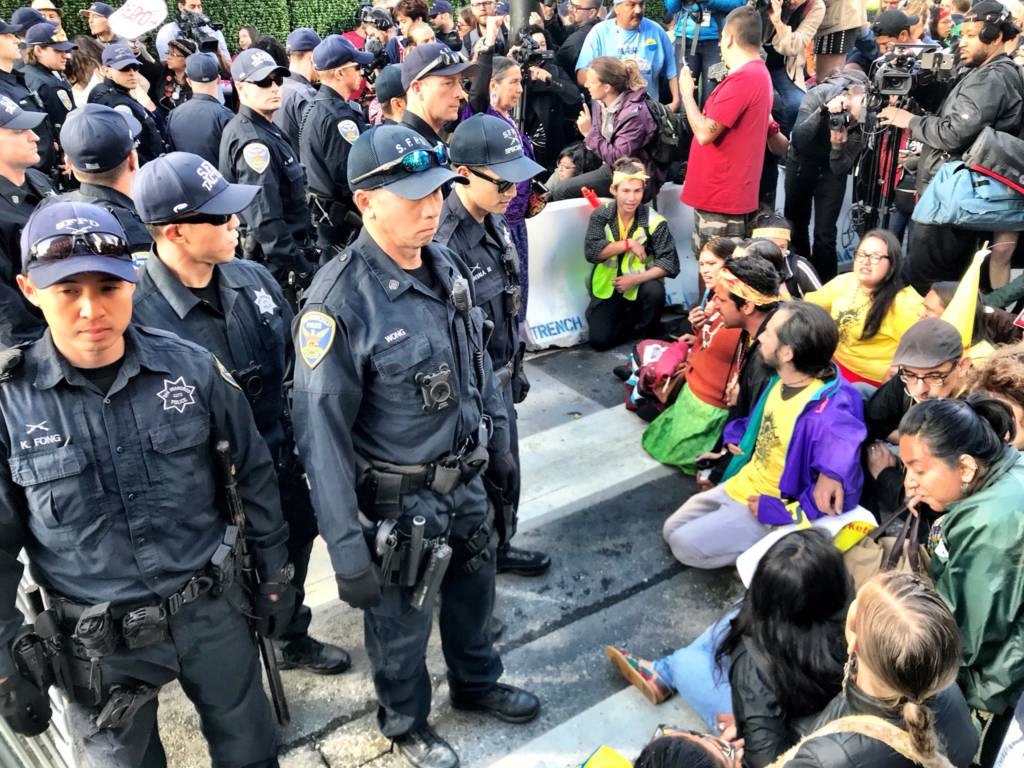Earlier this year, Greta Thunberg and 47 youth activists from around the world issued a stark call to us all. These brave young people, whose moral leadership has resulted in major victories in Europe, called on everyone, of all ages, to “unleash mass resistance” on September 20th, in order to help stave off the worst ravages of the climate crisis.
In the United States, tens of thousands look set to respond: Nearly 250 Climate Walkout events are set to take place on September 20th in what will most likely be the country’s largest ever mobilization for climate. Around the globe, the response has been equally impressive. It now looks like September 20th will be the world’s largest ever climate mobilization.
But it’s important to remember that the vision ― the call from the youth that started it all ― was never for a single day of action. The youth leaders did not ask us to walkout for a single day and then all go home and pat ourselves on the back for a job well-done. What these remarkable youth leaders asked us to do was to “kickstart a week of climate action with a worldwide strike for the climate.” It was to use September 20th to “unleash mass resistance” in the week afterwards, a week during which the United Nations and world leaders are gathering in New York to talk about the global response to the climate emergency.
And, as leaders of our 350 local groups, this is what we are intending to do: To use September 20th to kick-off a week of escalated, disruptive resistance to climate tragedy ― and we hope that you, as leaders of your 350 local groups, will do the same in your communities.

Last year, activists who participated in Rise for Climate followed up a few days later with a day of direct action at the Global Climate Action Summit.
We do not write these words lightly. The risks of engaging in civil disobedience are real. People who risk jail time to resist the power of the fossil fuel industry put their own freedom on the line, as well as their own safety, money, energy and time. Engaging in civil disobedience is not something anyone should take lightly. But the choices ahead of us are stark.
Our civilization is standing on the precipice of a cliff. One million species are facing extinction by the end of the century. Insect populations, upon which we depend for our food, are collapsing. Phytoplankton populations, upon which we depend for our oxygen, are collapsing. The global climate crisis threatens our planet with famine, droughts, hurricanes, floods, wildfires, climate-enforced migration and war. The burning of fossil fuels is the primary cause of all of this.
After decades of governmental and societal failure to tackle the climate crisis, mass resistance may now represent our greatest hope for curtailing the worst ravages of climate breakdown.
We have already seen what sustained escalated action can achieve. Earlier this year, in the United Kingdom, shortly after ten days of disruptive, disobedient action, during which over 1,000 people were arrested, the U.K. government declared a climate emergency ― and a once silent media was suddenly talking about the climate crisis as never before.
In the United States, too, there is a long history that points to the role that dignified, disruptive and disobedient moral protests play in bringing about change. From the moment that Susan B. Anthony disobeyed federal law and cast a vote as a woman, civil disobedience was an important strategy for the women’s suffrage movement. The disobedience and rebellion of the Civil Rights movement was arguably the key factor in precipitating the Civil Rights Act of 1964 and the Voting Rights Act of 1965. In the 1980s, the confrontational, disruptive acts of ACT UP were pivotal to a dramatic increase in both public funding and public services available to AIDS patients. Using tactics of disruption and rebellion, Occupy activists were able to do what many infinitely more well-funded groups were not: make wealth inequality part of the national debate.
The climate movement can learn from these movements the past ― movements which have time and again been led by those most impacted.
Now is the time for the climate movement to start taking action that is commensurate with the scale of the crisis. Between September 20th and 29th, climate activists around the country will be engaging in strategic, peaceful, nonviolent disobedience to throw a wrench in the climate-wrecking machine that is our current fossil fuel-based society.
That is what we are working on in our communities this September. We encourage you to do so too.
Signed by
Alec Connon and Val Costa, 350 Seattle
Micah Parkin, 350 Colorado
Phyllis Hasbrouck, 350 Madison
Laura Neish, 350 Bay Area
Lila Kohrman-Glaser 350 New Hampshire
Jessica Beckett, 350PDX
Craig Altemose, 350 Massachusetts
Masada Disenhouse, 350 San Diego